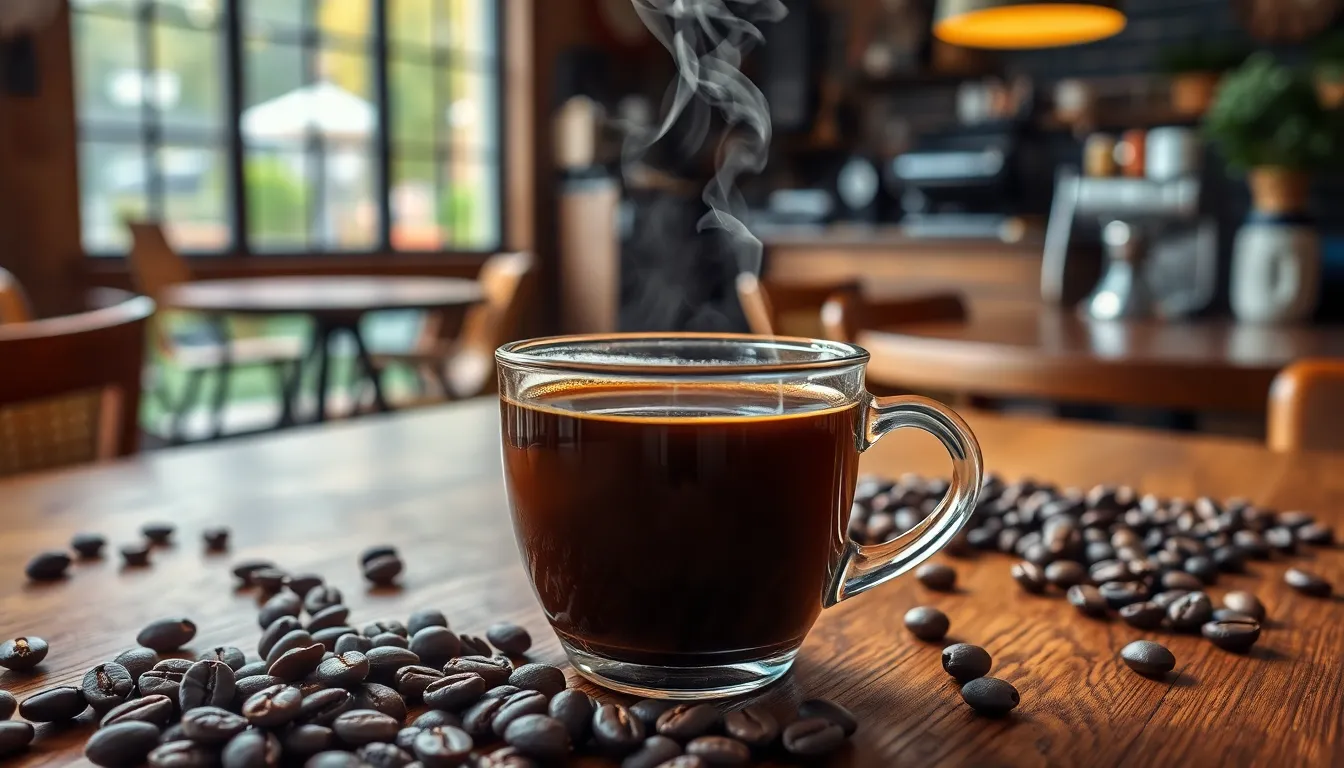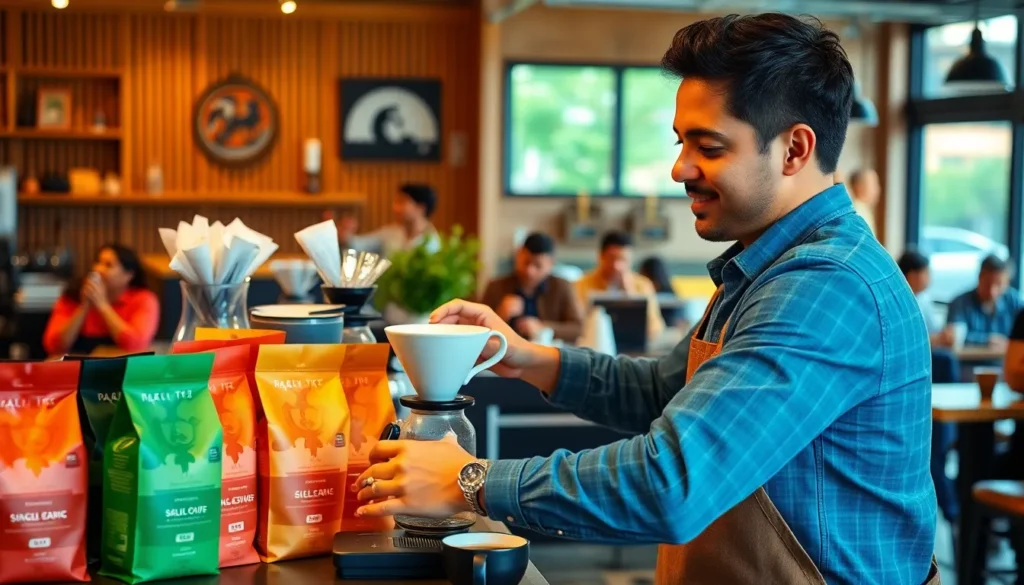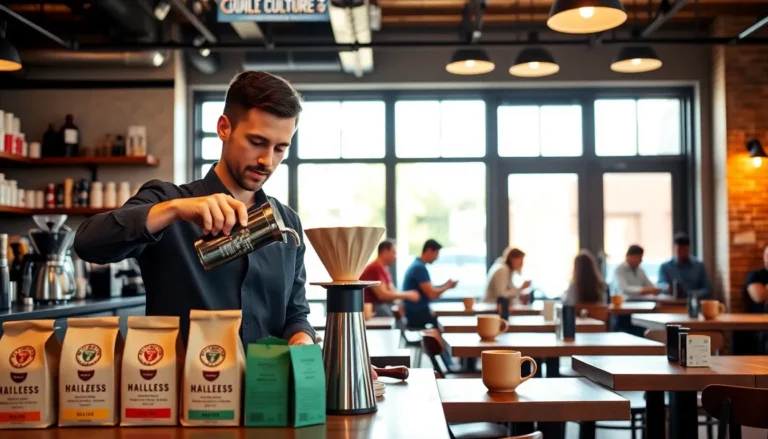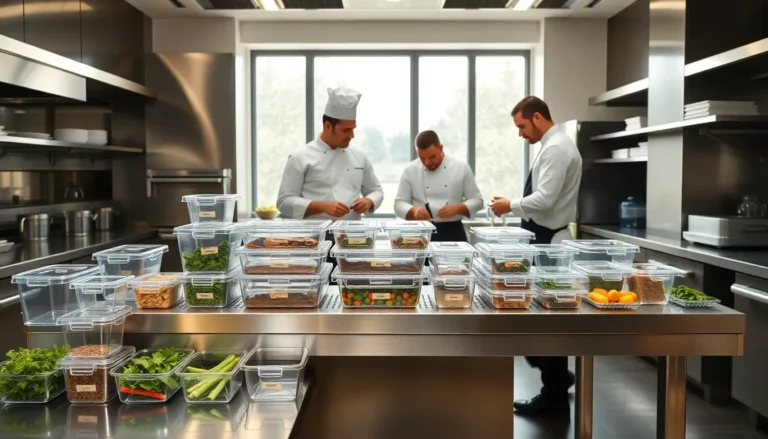In a world where coffee is more than just a morning ritual, specialty coffee has emerged as a beloved art form. With unique flavors and brewing methods, it captivates enthusiasts and casual drinkers alike. This guide dives into the fascinating realm of specialty coffee, offering insights that elevate the everyday coffee experience.
From understanding the nuances of single-origin beans to mastering brewing techniques, this guide equips readers with the knowledge to appreciate every sip. Whether someone’s a seasoned barista or just starting their coffee journey, exploring specialty coffee opens up a new dimension of taste and aroma. Get ready to embark on a flavorful adventure that transforms the way coffee is enjoyed.
Table of Contents
ToggleWhat Is Specialty Coffee?
Specialty coffee represents a higher echelon of coffee quality, emphasizing unique flavors, superior brewing techniques, and meticulous sourcing. This section dives into the definition and key characteristics that distinguish specialty coffee from regular coffee.
Definition of Specialty Coffee
Specialty coffee refers to coffee that scores 80 points or higher on a 100-point scale set by the Specialty Coffee Association (SCA). This rating evaluates factors like aroma, flavor, acidity, and body. Only beans cultivated in specific conditions and collected through careful methods qualify. Farms that prioritize quality over quantity and utilize sustainable practices often produce specialty coffee.
Key Characteristics
- Quality: Specialty coffee offers high-quality beans rated above 80 points by certified tasters.
- Origin: Specialty coffee comes from specific regions, showcasing distinct terroirs, supported by traceable origins.
- Flavor Profile: Specialty coffee exhibits diverse flavor notes, which can range from fruity and floral to nutty and chocolatey.
- Brewing Techniques: Specialty coffee often requires precise brewing methods, such as pour-over, Aeropress, or siphon, to enhance flavor extraction.
- Freshness: Specialty coffee emphasizes fresh beans, typically roasted within two weeks of brewing for optimal flavor.
- Ethical Sourcing: Specialty coffee often involves direct trade or fair trade practices, promoting ethical relationships between producers and consumers.
These characteristics contribute to the overall experience, making specialty coffee a treasured choice among aficionados and casual drinkers alike.
Types of Specialty Coffee

Understanding the various types of specialty coffee enhances the appreciation for its complexity and flavor. Two primary categories include single-origin coffee and blends.
Single-Origin Coffee
Single-origin coffee comes from a specific region, farm, or cooperative. These beans often showcase unique flavor profiles influenced by factors such as altitude, climate, and soil quality. Common regions known for single-origin coffee include Ethiopia, Colombia, and Guatemala. Many enthusiasts favor single-origin coffee for its distinct characteristics and the ability to trace flavors back to their source. Coffee varieties in this category often score high on quality assessments, reflecting commitment to cultivation and processing methods.
Blends
Blends combine beans from multiple sources to create a balanced flavor that appeals to a wider audience. Roasters carefully select beans from different regions, allowing them to enhance or complement specific tasting notes. Blended coffees often strive for chemical consistency and flavor stability while preserving each bean’s unique attributes. Common examples include espresso blends designed for rich, complex shots. Blends emphasize versatility, making them ideal for various brewing methods, from drip to French press.
Brewing Methods for Specialty Coffee
Brewing methods significantly influence the flavor and aroma of specialty coffee. Each technique offers distinct characteristics and requires specific equipment, making it essential to choose the right method for the desired taste profile.
Pour Over
Pour over brewing involves pouring hot water over coffee grounds in a filter, allowing precise control over extraction time and temperature. Key features include:
- Equipment: Common tools include a dripper (like the Hario V60 or Chemex) and a kettle with a gooseneck spout.
- Water Temperature: Aiming for a temperature between 195°F and 205°F maximizes flavor extraction.
- Grind Size: Medium-fine grind promotes balanced extraction, enhancing sweetness and acidity.
- Brewing Time: Total brewing time typically ranges from 2.5 to 4 minutes, depending on the coffee-to-water ratio and grind size.
French Press
French press brewing immerses coffee grounds in hot water, producing a rich and full-bodied cup. Characteristics include:
- Equipment: A French press consists of a glass or stainless-steel carafe and a metal or plastic plunger.
- Water Temperature: Ideal temperatures are between 200°F and 205°F for optimal extraction.
- Grind Size: Coarse grind prevents over-extraction, allowing natural oils to lend body to the coffee.
- Brewing Time: Steeping time lasts about 4 minutes before pressing, ensuring robust flavor without bitterness.
Espresso
Espresso brewing forces hot water through finely-ground coffee under high pressure, resulting in a concentrated shot with a rich crema. Essential elements include:
- Equipment: An espresso machine provides the necessary pressure and temperature control.
- Water Temperature: Maintaining a temperature around 200°F maximizes extraction quality.
- Grind Size: Fine grind increases resistance, enhancing the extraction process.
- Brewing Time: A typical espresso shot lasts about 25-30 seconds, yielding a balanced flavor profile and aromatic intensity.
These brewing methods highlight the art of specialty coffee, offering diverse flavors and experiences that cater to varying palates and preferences.
Tasting Notes and Flavor Profiles
Tasting notes and flavor profiles are essential for understanding and appreciating specialty coffee. Various flavor notes stem from specific regions, processing methods, and the inherent qualities of the beans.
Common Flavor Notes
Common flavor notes in specialty coffee can vary widely. Popular varieties include:
- Fruits: Citrus, berries, apples, and stone fruits often appear, reflecting underlying sweetness and acidity.
- Chocolate: Dark and milk chocolate notes create depth in many coffee profiles, especially from Central and South America.
- Nuts: Almond and hazelnut notes provide a creamy, smooth characteristic, enhancing the overall mouthfeel.
- Spices: Flavors like cinnamon, clove, and black pepper may add complexity, contributing to unique aftertastes.
- Floral: Jasmine, lavender, and bergamot notes can impart a refreshing quality, especially in higher-altitude coffees.
Understanding these flavors helps consumers select coffees that align with their preferences.
How to Taste Coffee
Tasting coffee involves specific steps to fully appreciate its complexity. The following process enhances the tasting experience:
- Smell: Inhaling the aroma reveals the coffee’s potential flavors. Swirling the cup helps release volatile compounds.
- Sip: Taking a small sip allows for an initial evaluation of flavor. Gently slurping can aerate the coffee, intensifying the taste.
- Swirl: Moving the coffee around the mouth provides a fuller experience of the texture and flavors.
- Evaluate: After swallowing, assess the aftertaste. Consider the mouthfeel and lingering notes.
Practicing these tasting techniques deepens appreciation for specialty coffee’s intricate flavor profiles.
Exploring specialty coffee opens up a world of rich flavors and unique experiences. Whether one prefers the distinct notes of single-origin brews or the balanced profile of blends, there’s something for everyone. The artistry involved in brewing methods enhances each cup, allowing coffee lovers to appreciate the nuances that define specialty coffee.
By understanding tasting notes and employing proper tasting techniques, individuals can elevate their coffee journey. This guide serves as an invitation to dive deeper into the craft of specialty coffee, encouraging both seasoned aficionados and curious newcomers to savor every sip. Embracing the diversity and quality of specialty coffee can transform an everyday ritual into a delightful exploration.



